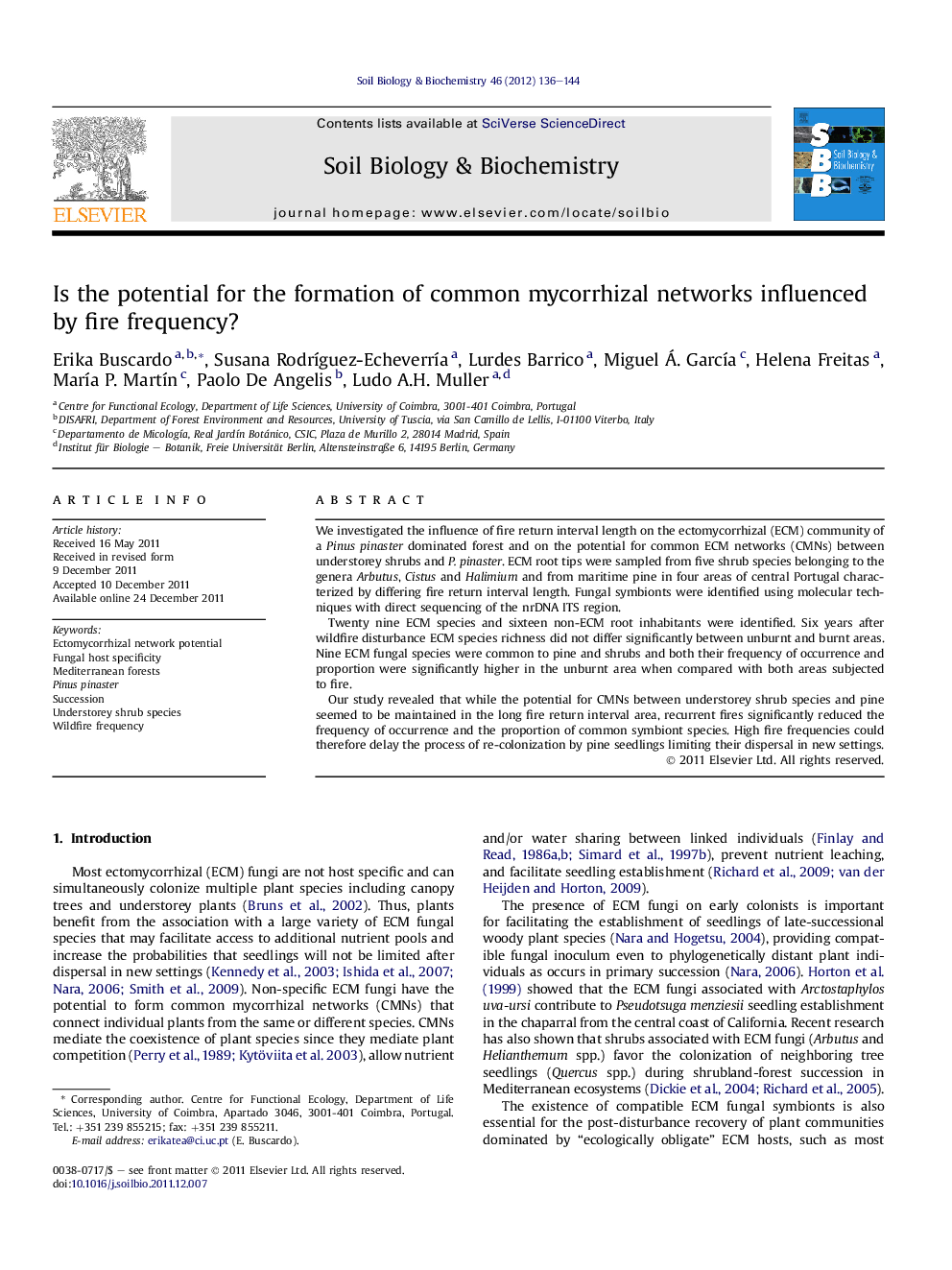| Article ID | Journal | Published Year | Pages | File Type |
|---|---|---|---|---|
| 2025015 | Soil Biology and Biochemistry | 2012 | 9 Pages |
We investigated the influence of fire return interval length on the ectomycorrhizal (ECM) community of a Pinus pinaster dominated forest and on the potential for common ECM networks (CMNs) between understorey shrubs and P. pinaster. ECM root tips were sampled from five shrub species belonging to the genera Arbutus, Cistus and Halimium and from maritime pine in four areas of central Portugal characterized by differing fire return interval length. Fungal symbionts were identified using molecular techniques with direct sequencing of the nrDNA ITS region.Twenty nine ECM species and sixteen non-ECM root inhabitants were identified. Six years after wildfire disturbance ECM species richness did not differ significantly between unburnt and burnt areas. Nine ECM fungal species were common to pine and shrubs and both their frequency of occurrence and proportion were significantly higher in the unburnt area when compared with both areas subjected to fire.Our study revealed that while the potential for CMNs between understorey shrub species and pine seemed to be maintained in the long fire return interval area, recurrent fires significantly reduced the frequency of occurrence and the proportion of common symbiont species. High fire frequencies could therefore delay the process of re-colonization by pine seedlings limiting their dispersal in new settings.
► Ectomycorrhizal (ECM) fungal species richness was not affected by fire regime. ► Nine ECM fungal species were common to maritime pine and understorey shrubs. ► Recurrent fires reduced the frequency and the proportion of common fungal symbionts.
